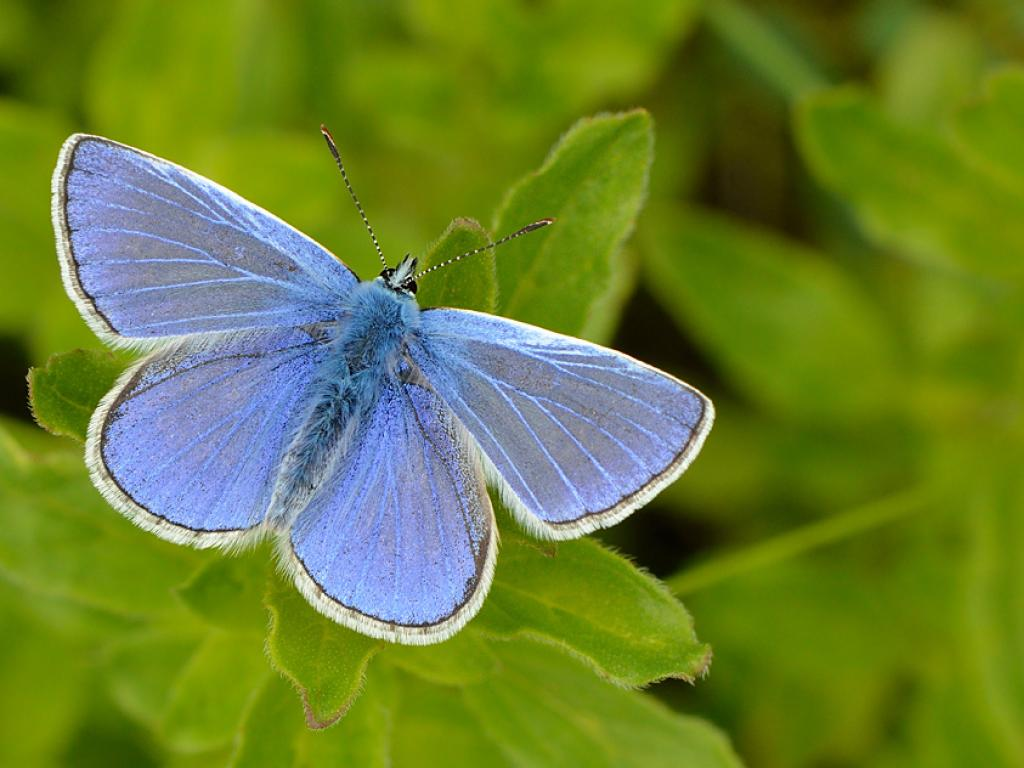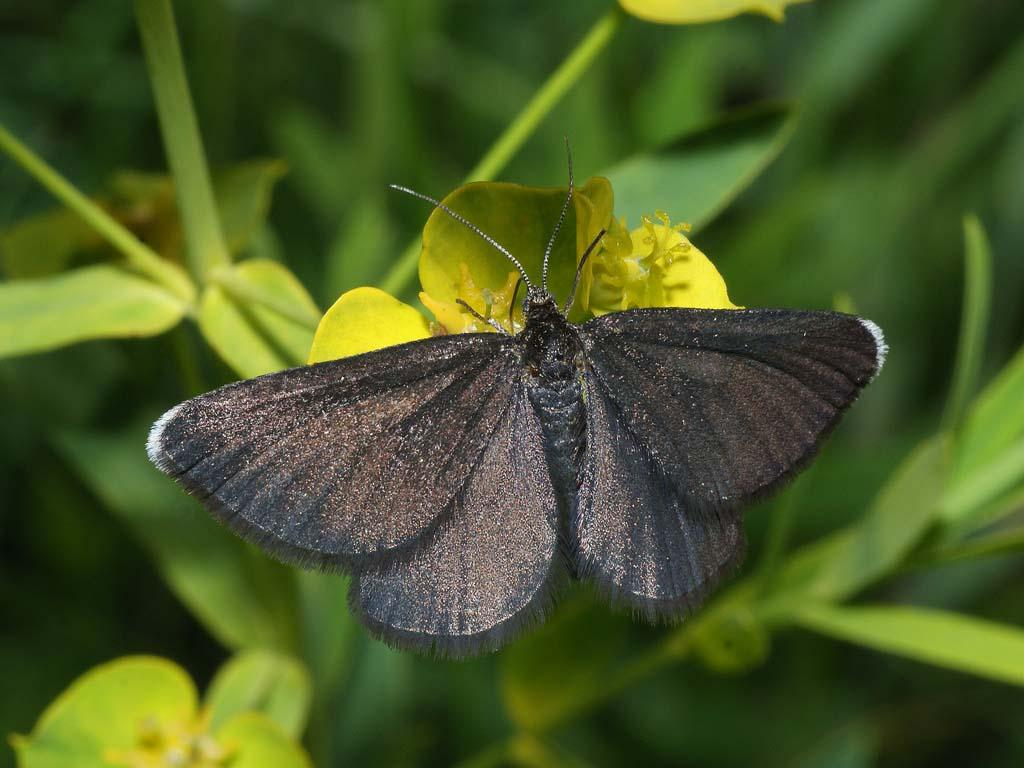Small Blue Butterfly
(Cupido minimus)
Gaelic: An Gorman-Beag
By Sarah Bird, Project Officer, Species on the Edge – North Scotland Coast, working for Plantlife

In Britain the tiny Small Blue butterfly is scarce, and declining in most of the places where it occurs. On the north Scotland coast we have a few small populations in Caithness and historic records from Sutherland around Bettyhill. I was thrilled to see my first Small Blue at an event last week, and have been to other sites since to spot them again. They are subtle, secretive and addictive!

© Butterfly Conservation: Ian Leach
Where to look
The Small Blue butterfly is confined to small patches of sheltered grassland where its only foodplant, Kidney Vetch, is found. The butterfly is easily missed because of its small size and the fact that its not very blue in colour.
Good places to look on the north coast are the grassy slopes around Scrabster harbour, around the disused flagstone quarry on the coast at Castlehill, and in the dunes at Dunnet beach. The Coronation Meadow opposite the Burn O Mid sands car park, which is a wonderful site for wildflowers, is also likely to be used by Small Blue butterflies on calm, sunny days.

When to look
Adult Small Blues can be seen from late May and throughout June. The best time to search for butterflies is on a warm sunny day, with no wind. Those conditions can be scarce in Sutherland and Caithness so finding a sheltered spot gives you the best chance of seeing them. Butterfly Conservation suggest that checking long grass in late afternoon is a good idea as the butterflies gather in communal roosts.
What to look out for
First find your Kidney vetch!… Then look for a tiny dark grey-brown butterfly, that has a shimmer of blue in the wings when it flies.

© Anne Burgess

© Butterfly Conservation: Heath MacDonald

© Butterfly Conservation Peter Withers
The wings are dark brown, with a thin white edge, and a fine layer of blue scales spreading out from the body. The undersides of the wings are pale grey with dark spots and a slight blue colour again spreading out from the body.
If you see a butterfly that is strongly blue it is most likely to be a Common Blue. The other species that might be confused with Small Blue is the Chimney Sweeper moth.

© Butterfly Conservation: Bob Eade

© Butterfly Conservation: Peter Withers

© Butterfly Conservation: Peter Withers
Fascinating Facts
- The Small Blue is the smallest resident British butterfly. Wingspan is only 20-30mm.
- Male and female butterflies will feed on nectar from various flowers, and males will take in minerals and salts from mud, carrion and animal droppings.
- When not looking for nectar, males will watch out for females, perching on a piece of grass or shrub.
- Females lay single eggs on kidney vetch flowers. They only lay one egg in each flower as the caterpillars are cannabilistic after hatching.

© Butterfly Conservation: Peter Evans
Threats
Kidney Vetch plants are short-lived and they are poor competitors in meadow habitats. They disappear as permanent grassland communities develop, and Small Blue butterfly colonies disappear too, as a result. Open ground is needed to allow the vetch seedlings to establish and support butterflies. These fragile conditions occur naturally on mobile sand dune systems and cliffs, where movement of sand by the wind, or erosion of rocky slopes regularly opens up patches of bare soil or sand.
When this natural process doesn’t provide enough Kidney Vetch, management by volunteers can be vital for the survival of Small Blue butterfly colonies. On the north Scotland coast Caithness Environment Volunteers have worked hard for many years managing habitat and growing and planting Kidney Vetch for these special butterflies. The survival of the Small Blue in Caithness is a superb testament to their hard work.
What you can do to help..
If you would like to join Caithness Environment Volunteers please contact: caithnessenvvols@outlook.com
You can report a sighting of Small Blue, or any other butterfly species here.






